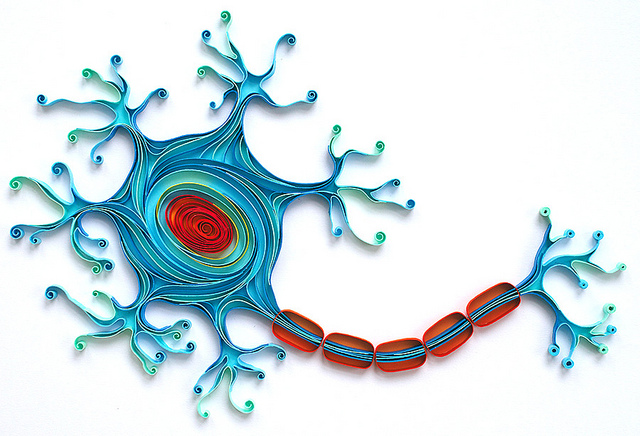Imagine you have the textbook symptoms of amyotrophic lateral sclerosis (ALS) — muscle weakness or stiffness — but had to wait up to a year to confirm its presence.
Right now, the only way to determine whether a person has the debilitating neurological disease is through a lengthy process of ruling out other possible afflictions. Doctors want to make that diagnosis as quickly as possible but the reality is that patients can suffer weeks or months of anxiety from not knowing.
An Arizona biomedical researcher is on the cusp of changing all that.
Robert Bowser, Ph.D, of the Barrow Neurological Institute at St. Joseph’s Hospital and Medical Center in Phoenix, is poised to go global with a way to diagnostically detect if a person has ALS, a rapidly progressive disease. The detection takes form by way of a blood or spinal fluid test, which serves as a signal or a marker for the disease. You draw blood or spinal fluid and a few hours later you get an answer.
It’s a sharp contrast to the current method of ruling out other symptoms and basically telling the patient that they may have ALS but they need to wait until other potential problems are ruled out. That, of course, can be stressful for patients. It’s that anxiety that Dr. Bowser seeks to eliminate through fast and accurate diagnosis.
“Early ALS detection will get them a drug faster,” Dr. Bowser said. “It means patients will be targeted for ALS clinics earlier so they can live longer with a higher quality of life.”
The path was set when Dr. Bowser authored an ALS biomarkers paper in 2005, which spurred the concept of testing blood and spinal fluid for ALS. Since then he has performed years of work to make an ALS diagnostic test highly accurate and sensitive.
It would go a long way toward mitigating suffering that comes with ALS, which affects nerve cells in the brain and the spinal cord, and can strike anyone at any time. Its onset includes muscle weakness or stiffness, and as it progresses, patients get increasingly weak and muscle wasting and paralysis set in, including those that control vital functions such as speech, swallowing and breathing.
Typically, the disease kills patients within five years of diagnosis. There’s no cure. Progression of the disease may be slowed by drugs that are being tested in clinical studies. That makes Dr. Bowser’s diagnostic test critical for patients. The biomarkers that Dr. Bowser’s test detects are indicators of disease and can predict its progression.
Dr. Bowser’s pursuit of an ALS diagnostic test stemmed from a research interest and focus. He said he saw a “great need for something to be done” and met with ALS patients.
Approximately 5,600 people in the U.S. are diagnosed with it each year and as many as 30,000 Americans may have the disease at any given time.
Dr. Bowser wants to launch the ALS diagnostic test in early 2016. In terms of market readiness, the test is in the final phase of the clinical validation process. Studies have been performed in centers across the U.S., Bowser said, with the overall accuracy of the test at 93 percent. He is meeting with the Food and Drug Administration to find regulatory pathways for the test to come to market. He is in the process of recruiting sites that would use the test—hospitals, clinics and other medical facilities.
It’s an exciting, busy and prosperous time for the doctor who is set to receive The Sheila Essey Award for ALS Research in April at the American Academy of Neurology conference in Washington, D.C. The Essey award acknowledges and honors those making significant contributions in research for the cause, treatment, prevention or cure for ALS. Last year the award went to Dr. Jeremy Shefner, who is chair of the Department of Neurology and associate director of Barrow Neurological Institute.
And earlier this year, Dr. Bowser’s Iron Horse Diagnostics was recognized by the Arizona Commerce Authority (ACA) as a leading early-stage biotechnology venture and was a winner of ACA’s highly competitive Arizona Innovation Challenge – a contest that recognizes companies with innovative technology solutions with potential global implications.
Dr. Bowser graduated from Carnegie Mellon University and has a Ph.D from Yale University. In 2011, upon arriving from the University of Pittsburgh, he joined the faculty at Barrow. The next year he launched his Scottsdale-based Iron Horse Diagnostics (baseball great Lou Gehrig, who died from ALS, was nicknamed The Iron Horse) to support and commercialize his research on ALS at Barrow.
Iron Horse has five employees at its main office in Scottsdale, but Dr. Bowser said he is looking to hire more. His 2013 award from the Arizona Bioindustry Association, or AZBio, came at a critical juncture, he said. The accolade from the group, which recognizes leaders, innovators and companies that are making Arizona one of the fastest growing bioscience states in the U.S., provided the opportunity to interact with potential investors and the funds allowed him to hire additional employees. He is also in the process of recruiting a CEO to run Iron Horse. The company has also been supported by a grant from the National Institutes of Health.
It makes sense that Dr. Bowser’s effort is taking place here in Arizona. Arizona’s bioscience and health care industry has experienced remarkable growth since 2000, adding approximately 100,000 jobs, adding hundreds of bioscience firms and increasing spending on academic research and development at a healthy clip.
Photo credit: Ann Martin




